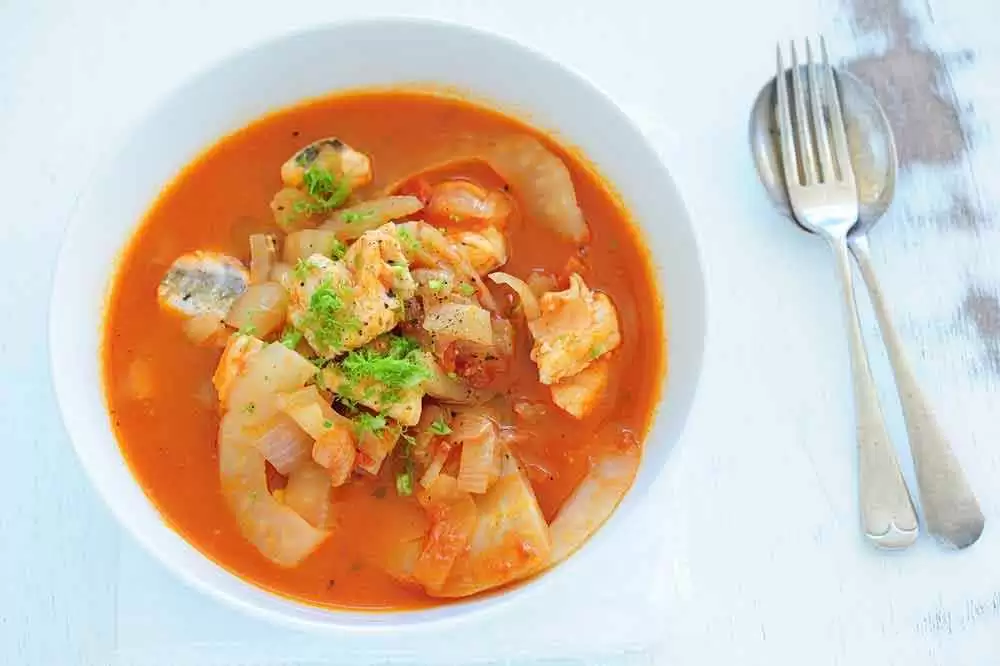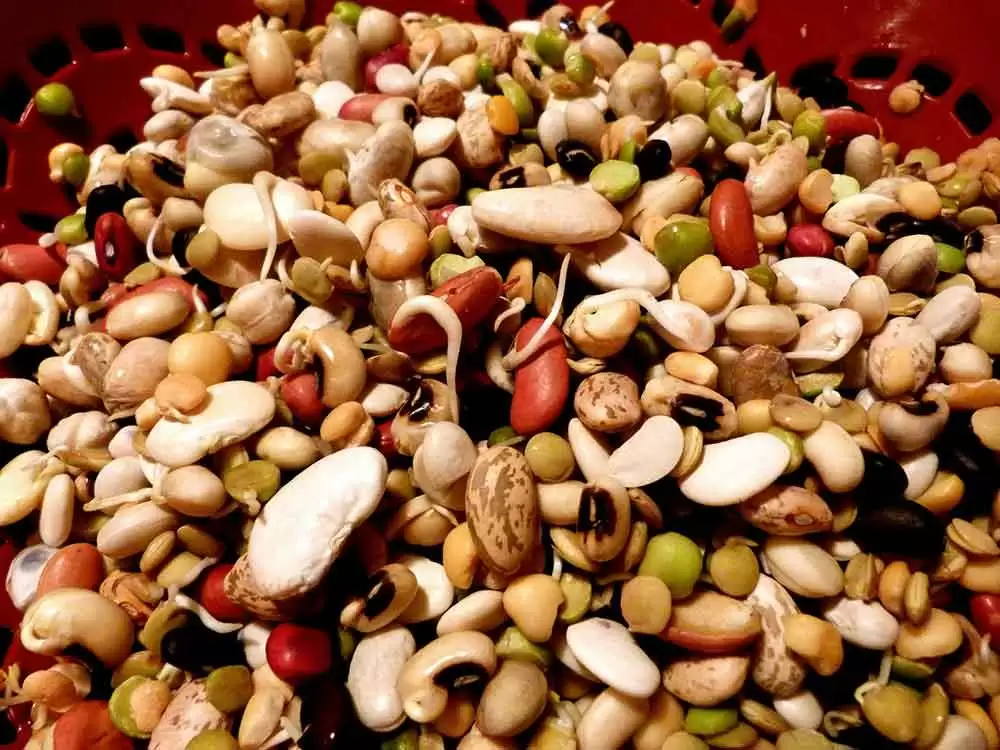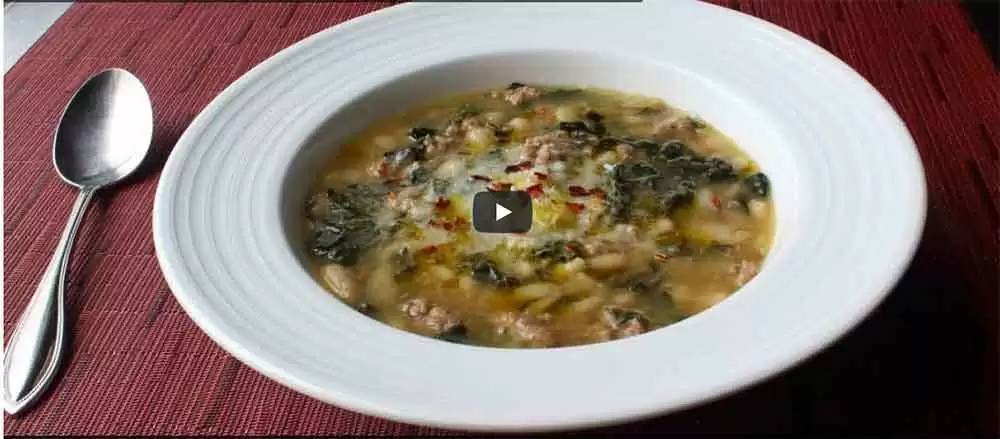
Celiac.com 12/12/2020 - Italia—the land of superb food. When you think of Italian food, chances are that the first thing that comes to mind is pasta. Do you know that rice and corn pasta can be every bit as luscious as wheat pasta when cooked properly? (The secret is not to overcook it.) So indulge in the scents and tastes of Italy’s best known delicacy.
Rice is a popular ingredient in Italy, especially risotto. Risotto is made with medium-grain Arborio, Vialone or Carnaroli rice. Cooked, the rounded grains are firm and creamy due to their high starch content. To make risotto, cook the rice briefly in butter or olive oil until evenly coated and the rice starts to turn translucent, then add broth, one ladle at a time. One popular dish is Risotto a la Milanese, made with chicken or beef stock and saffron; it is traditionally served with osso buco (a stew made from veal bones).
Celiac.com Sponsor (A12):
Cannelloni beans (white kidney beans), or fagiole, taste a lot like Great Northern beans and are the pride of the Tuscany region. The beans are boiled, then sautéed in olive oil with sage and tomatoes.
Italian cooking is impossible without herbs, preferably fresh herbs. Basil is a staple and is used in salads, on meats, and definitely in tomato sauce. The best way to prolong the life of fresh herbs is to wash them, wrap them in a paper towel to soak up excess moisture, then store them in a plastic bag in the refrigerator. Other “musts” for Italian foods are fresh parsley, oregano, rosemary, sage and thyme...and then there is glorious garlic!
The purple carciofi (artichoke), has little resemblance to the artichokes we find in the produce sections of American grocery stores. In Italy, artichokes are cooked in every conceivable way, including braising, stuffing, stewing, frying, broiling and grilling. If you have never cleaned an artichoke, the first time may be a bit daunting. First, fill a large bowl ¾ full with water and add the juice of one fresh lemon. With a sharp knife, trim off all but one inch of the stem. Break off and discard the older, tough, outside leaves. Cut off the top 1/3 of the artichoke and discard. The easiest way to remove the choke is to cut the artichoke in half and scrape out the fuzzy center and prickly leaves, rinse, then place in lemon water until ready to use. Roast these delicacies in tomato sauce, or prepare au gratin, or pan-fry—but do make them and enjoy their succulent taste.
Filling or stuffing vegetables is an accomplished art for Italians. Some fillings are as simple as removing the center of a vegetable, chopping the centers and mixing them with herbs and spices and some cheese, placing the filling back in the shells then baking. But more frequently the vegetable is stuffed with a meat, pasta or rice filling. Add a side salad and a slice of gluten-free bread and you have a complete meal. Stuffed peppers are a regular stand-by, as are stuffed onions, eggplant, and zucchini. The large yellow zucchini flowers are often stuffed with ricotta or shredded potatoes that have been sautéed in a spicy tomato sauce.
Italy invented the antipasti (or ‘antipasto’ as we call it). The purpose of this array of sampler foods is to stimulate your senses before your meal, wake up your appetite. A typical antipasti platter in Italy includes an endless choice of vegetables (roasted, grilled, marinated and fried), cold meats (usually prosciutto and salami), olives and wedges of aged Parmesan, mozzarella or goat cheese, along with platters of seafood salad, and perhaps steamed muscles and clams.
Italy also lays claim to fame for cornmeal polenta. Polenta can be creamy, served soft with a scoop of sauce, or firm and served as a side dish to grilled or roasted meats, or stirred into soups and stews to thicken and add flavor. Whatever way you choose to eat polenta, the basic principles of preparation remain the same: Bring 4 ½ cups of water to a boil in a medium saucepan. Add 1 tablespoon salt and reduce the heat to medium low. As soon as the water begins to simmer, start pouring in 1 cup cornmeal in a thin stream, very slowly while stirring constantly with a wooden spoon to prevent lumps. Once all the cornmeal has been added, keep the water at a simmer and stir frequently. It should take about 20 minutes to fully cook the polenta. When fully cooked, the polenta should pull away from the sides of the pot easily. Once your polenta is cooked, you can serve it soft or firm, baked, fried or grilled. You can top it with butter or marinara sauce, or add cheese, browned crumbled sausage or shredded veggies to the cornmeal mixture.
But what is Italian food without pasta? The gluten-free pastas need a bit more watching while the pot is boiling to prevent them from falling apart, but with the right sauce... magnifiquo! While marinara sauce may be the first sauce to come to mind, aglio olio (garlic oil sauce) is also an Italian favorite. All kinds of things are folded into the pasta or spooned on top: pesto sauce, sausage and peppers, shrimp and tomatoes, ham and beans, or sun dried tomatoes and olives.
Using a spoon as a loading zone for the pasta strands is and American, not Italian, tradition. In Italy, they just swirl the strands onto their forks which often results in a larger yield than the mouth can accommodate. So what is the perfect method for gathering the pasta in a dish? Gather only three or four strands on your fork before twirling.
Formal entertaining in Italy is done by serving multiple courses of small amounts of food. Prior to the first course being served, the antipasti (appetizer) platter is presented for consumption. This is followed by a first course of either soup or pasta. The second course is an entrée of either meat or fish with a side of vegetables. The final course at an Italian table is the salad, which seems both to refresh the diner after a heavy meal as well as cleanse the palate before the dessert course.
The dessert course is usually served in two stages. Stage number one consists of ice cold fresh fruit often served with nuts. Then comes the final offering of something sweet like tiramisu, biscotti or an ice. Espresso coffee is served throughout the meal and dessert.
Nutty Biscotti by Connie Sarros
This recipe is from the new book I co-authored with Danna Korn: “Gluten-free Cooking for Dummies” (a sequel to Danna’s “Living Gluten-free for Dummies” book).
Biscotti are perfect to keep on hand. They will hold several days in a plastic self-seal bag or in a covered plastic container. After the second baking, these ‘sticks’ will harden a bit, so be sure not to over bake them. If you want to live life on the wild side, soak some dried cranberries in Kaluha, and then fold them into the batter.
*My flour mixture already contains xanthan gum. If you are using a different flour mixture, add 1 ½ teaspoons xanthan gum to the dry ingredients.
Ingredients:
- ¾ cup blanched slivered almonds
- 3 tablespoons butter, softened
- 2/3 cup sugar
- 2 eggs
- 1 teaspoon vanilla
- ¼ teaspoon almond flavoring
- 1 ½ cups gluten-free flour mixture*
- 1 ½ teaspoon baking powder
- 1 teaspoon baking soda
- 1 teaspoon gluten-free instant coffee granules
- 1/8 teaspoon salt
- ½ teaspoon cinnamon
- ½ cup gluten-free miniature semisweet chocolate chips
- 4 ounces semisweet chocolate
- 1 teaspoon corn oil
Directions:
Preheat oven to 350F degrees.
In a small skillet, sauté almonds in 1 tablespoon butter until golden, stirring frequently. Remove from heat and let cool. Line a baking sheet with wax paper (or parchment paper). Set aside. In a medium mixing bowl, whip together 2 tablespoons butter, sugar, and eggs on high speed until mixture is thick and fluffy (about 5 minutes). Add vanilla and almond flavorings.
In a small bowl, whisk together flour mixture, baking powder, baking soda, coffee granules, salt, and cinnamon. Add flour mixture to egg mixture, beating just until thoroughly combined. Fold in chocolate chips and almonds.
Transfer dough to wax paper (or parchment) lined baking pan. With damp hands, form dough into a log about 14 inches long and 2 inches high (Dough will be somewhat sticky to work with but don’t add more flour or your biscotti will turn out dry).
Bake for 25 minutes or until just beginning to brown on the outside and firm to the touch.
Remove from oven and let cool for 10 minutes.
Gently slice log into ½-inch slices. Stand slices upright on a cookie sheet. Bake for 20 minutes until firm (but NOT rock hard) and golden. Remove from oven and cool. Cut semisweet chocolate into small pieces and place in a medium skillet with the oil. Heat very slowly, stirring often, until chocolate has melted. (If heat is too high, chocolate will burn.) Remove pan from heat and dip bottoms of biscotti in chocolate to coat. Set each piece on its side on a piece of wax paper to dry. Yield: 18 slices.












Recommended Comments
Create an account or sign in to comment
You need to be a member in order to leave a comment
Create an account
Sign up for a new account in our community. It's easy!
Register a new accountSign in
Already have an account? Sign in here.
Sign In Now